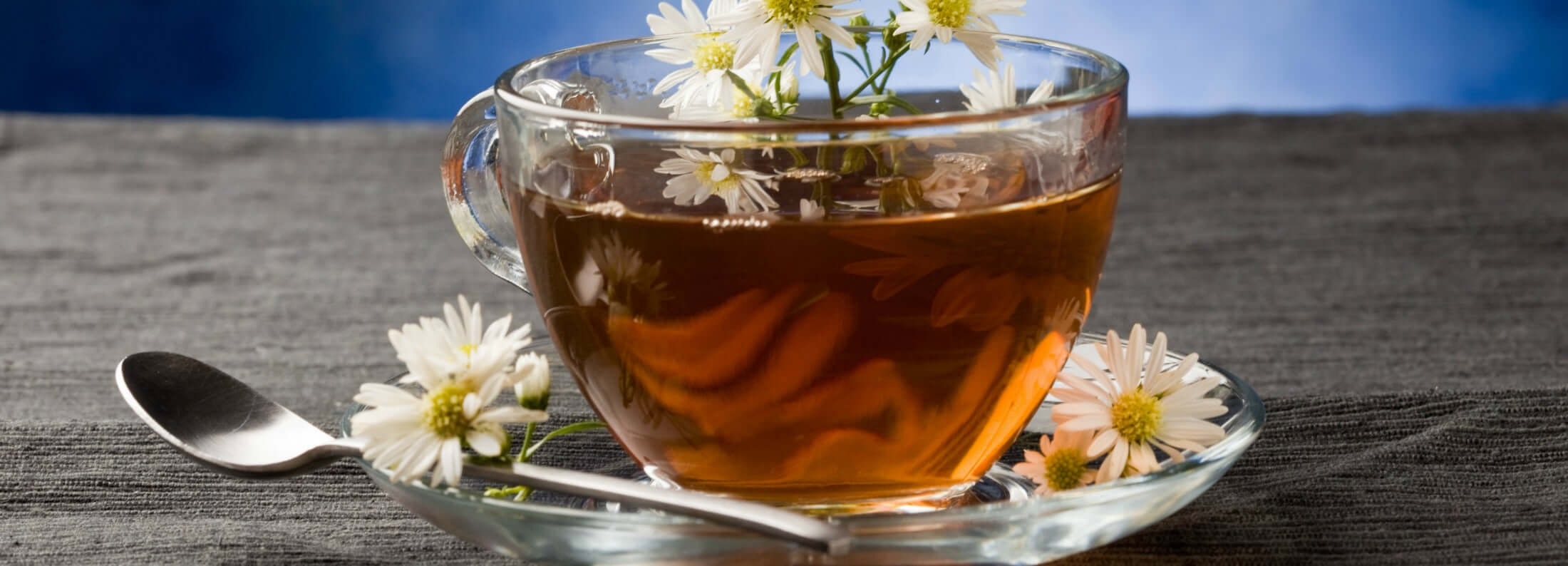The calming, healing effects of chamomile
Herbal remedies and aromatherapy have been used for centuries to help people feel and sleep better. Chamomile, a white, daisy-like flower, is one of the most popular herbs for a variety of reasons. It’s been used for everything from treating chest colds to a sleep aid to soothing an upset stomach to fighting infection in slow-healing wounds. You can buy chamomile as dried flower heads, an infusion (tea), liquid extract, tinctures (concentrated in alcohol) and in creams and ointments.
For centuries, many different cultures have use chamomile for its healing and sedative powers. The Egyptians dedicated the herb to the sun and worshiped it above all other herbs for its healing powers. Hieroglyphic records also show that it was used cosmetically for at least 2,000 years. Greek physicians prescribed it for fevers and female disorders.
Chamomile & a better night’s sleep
The delicate, fragrant scent of chamomile is soothing and has been used as a mild, relaxing sleep aid to help treat insomnia for centuries. Add a drop or two of chamomile oil to a cotton ball and place it near your pillow on the mattress. Or if you prefer, spray your bed linens with a chamomile-infused linen spray. If you suffer from asthma, pneumonia or hay fever, the scent of chamomile while you sleep can help with symptoms. If you enjoy a warm bath at the end of a long day, adding a few drops of chamomile oil can help reduce stress, ease aches and act as a mild sedative to help you fall asleep.
Sip on this to help you sleep
Chamomile is most often used in tea form with a list of numerous uses and benefits. In addition to being a natural sleep aid, it’s anti-septic and anti-inflammatory properties:
- Soothes stomach aches, promotes elimination and assists in overall digestion
- Helps ease anxiety and reduce stress
- Reduces inflammation in skin irritations such as eczema, acne and allergies
- Lessens the pain and discomfort of menstrual cramps
- Boosts the immune system, making it easier to fight off a cold
- Accelerates the healing process of minor wounds and also disinfects the wounds (when used as a compress)
Talk about a powerful plant!
How to make chamomile tea
Brewing chamomile tea is similar to any other herbal tisane – simple with delicious, healthy results. This chamomile tea recipe can be prepared with a chamomile teabag, loose-leaf chamomile tea, or loose, dried chamomile blossoms. You’ll need:
- 1 chamomile teabag or 1 heaping teaspoon loose-leaf chamomile tea or dried chamomile flowers
- 8 oz. (about 250 ml) boiling water
- Honey, lemon, or mint to sweeten
To brew your tea:
- Add the teabag or loose-leaf tea to your favorite cup or mug. If you’re using loose-leaf tea, add the leaves to an infuser.
- Chamomile tea is best when steeped in hot – not boiling – water so let your boiling water sit for a minute before adding it to your cup.
- Let your chamomile tea steep for 5 to 10 minutes (most herbal teas improve with longer steeping times to bring out their best flavor and fullest benefits).
- Remove the teabag or loose tea leaves.
- Optional – add natural sweeteners, such as lemon, or mint
Now, sit back, relax, and sip your delicious, comforting tea and its healing and sedative powers. It’s no wonder the Egyptians held it in such high esteem. Whether you use it as a sleep aid or to ease an alignment, chamomile is one of nature’s greatest plants with benefits for all of us.


